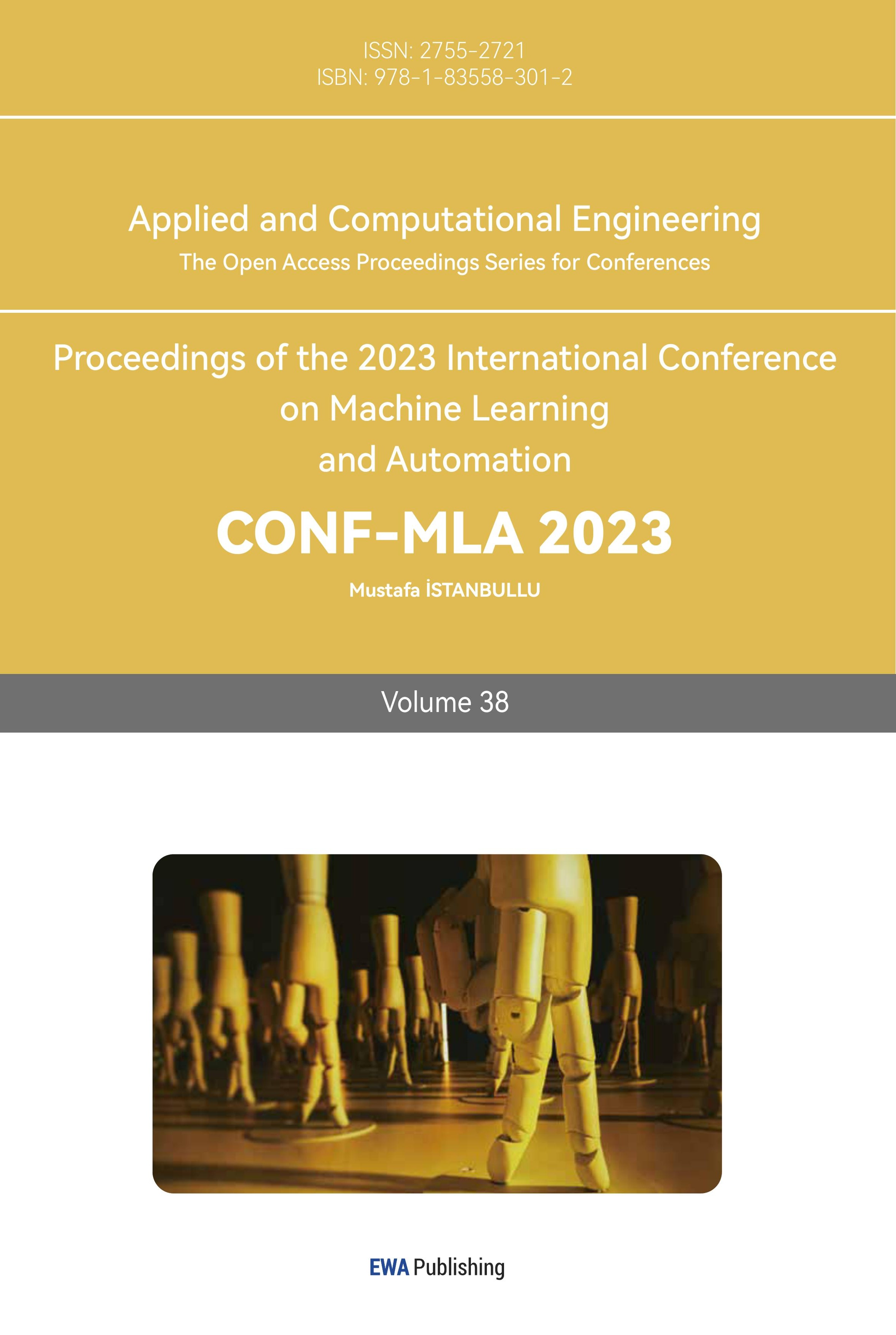References
[1]. Zhao W Jiang W Qiu X 2021 Deep learning for COVID-19 detection based on CT images Sci Rep 11s; p 14353
[2]. Rabie A H Mohamed A M Abo-Elsoud M A Saleh A I 2023 A new Covid-19 diagnosis strategy using a modified KNN classifier Neural Comput Appl 2: pp 1-25
[3]. Aslan M F Sabanci K Durdu A Unlersen M F 2022 COVID-19 diagnosis using state-of-the-art CNN architecture features and Bayesian Optimization Comput Biol Med 142: p 105244
[4]. Xia Y Chen W Ren H et. al. 2021 A rapid screening classifier for diagnosing COVID-19 Int J Biol Sci 17(2): pp 539-548
[5]. Guo X Li Y Li H et. al. An improved multivariate model that distinguishes COVID-19 from seasonal flu and other respiratory diseases Aging (Albany NY) 12(20): pp 19938-19944
[6]. Zhou X Wang Z Li S 2021 Machine Learning-Based Decision Model to Distinguish Between COVID-19 and Influenza: A Retrospective, Two-Centered, Diagnostic Study Risk Manag Healthc Policy 14: pp 595-604
[7]. Belkacem Abdelkader Nasreddine 2021 End-to-End AI-Based Point-of-Care Diagnosis System for Classifying Respiratory Illnesses and Early Detection of COVID-19: A Theoretical Framework Frontiers in Medicine 8
[8]. Islam R Abdel-Raheem E Tarique M 2022 A study of using cough sounds and deep neural networks for the early detection of Covid-19 Biomed Eng Adv 3: p 100025
[9]. Chen J Pan Y Li G et. al. 2021 Distinguishing between COVID-19 and influenza during the early stages by measurement of peripheral blood parameters J Med Virol 93(2): pp 1029-1037
[10]. Alemi F Vang J Wojtusiak J et al. 2022 Differential diagnosis of COVID-19 and influenza PLOS Global Public Health 2(7): p e0000221
[11]. Walter Conway0 2021 COVID, FLU, COLD Symptoms. Kaggle. https://www.kaggle.com/datasets/walterconway/covid-flu-cold-symptoms
Cite this article
Zhang,J. (2024). Clinical diagnosis of overlapping symptoms in COVID-19 based on machine learning model. Applied and Computational Engineering,38,237-241.
Data availability
The datasets used and/or analyzed during the current study will be available from the authors upon reasonable request.
Disclaimer/Publisher's Note
The statements, opinions and data contained in all publications are solely those of the individual author(s) and contributor(s) and not of EWA Publishing and/or the editor(s). EWA Publishing and/or the editor(s) disclaim responsibility for any injury to people or property resulting from any ideas, methods, instructions or products referred to in the content.
About volume
Volume title: Proceedings of the 2023 International Conference on Machine Learning and Automation
© 2024 by the author(s). Licensee EWA Publishing, Oxford, UK. This article is an open access article distributed under the terms and
conditions of the Creative Commons Attribution (CC BY) license. Authors who
publish this series agree to the following terms:
1. Authors retain copyright and grant the series right of first publication with the work simultaneously licensed under a Creative Commons
Attribution License that allows others to share the work with an acknowledgment of the work's authorship and initial publication in this
series.
2. Authors are able to enter into separate, additional contractual arrangements for the non-exclusive distribution of the series's published
version of the work (e.g., post it to an institutional repository or publish it in a book), with an acknowledgment of its initial
publication in this series.
3. Authors are permitted and encouraged to post their work online (e.g., in institutional repositories or on their website) prior to and
during the submission process, as it can lead to productive exchanges, as well as earlier and greater citation of published work (See
Open access policy for details).
References
[1]. Zhao W Jiang W Qiu X 2021 Deep learning for COVID-19 detection based on CT images Sci Rep 11s; p 14353
[2]. Rabie A H Mohamed A M Abo-Elsoud M A Saleh A I 2023 A new Covid-19 diagnosis strategy using a modified KNN classifier Neural Comput Appl 2: pp 1-25
[3]. Aslan M F Sabanci K Durdu A Unlersen M F 2022 COVID-19 diagnosis using state-of-the-art CNN architecture features and Bayesian Optimization Comput Biol Med 142: p 105244
[4]. Xia Y Chen W Ren H et. al. 2021 A rapid screening classifier for diagnosing COVID-19 Int J Biol Sci 17(2): pp 539-548
[5]. Guo X Li Y Li H et. al. An improved multivariate model that distinguishes COVID-19 from seasonal flu and other respiratory diseases Aging (Albany NY) 12(20): pp 19938-19944
[6]. Zhou X Wang Z Li S 2021 Machine Learning-Based Decision Model to Distinguish Between COVID-19 and Influenza: A Retrospective, Two-Centered, Diagnostic Study Risk Manag Healthc Policy 14: pp 595-604
[7]. Belkacem Abdelkader Nasreddine 2021 End-to-End AI-Based Point-of-Care Diagnosis System for Classifying Respiratory Illnesses and Early Detection of COVID-19: A Theoretical Framework Frontiers in Medicine 8
[8]. Islam R Abdel-Raheem E Tarique M 2022 A study of using cough sounds and deep neural networks for the early detection of Covid-19 Biomed Eng Adv 3: p 100025
[9]. Chen J Pan Y Li G et. al. 2021 Distinguishing between COVID-19 and influenza during the early stages by measurement of peripheral blood parameters J Med Virol 93(2): pp 1029-1037
[10]. Alemi F Vang J Wojtusiak J et al. 2022 Differential diagnosis of COVID-19 and influenza PLOS Global Public Health 2(7): p e0000221
[11]. Walter Conway0 2021 COVID, FLU, COLD Symptoms. Kaggle. https://www.kaggle.com/datasets/walterconway/covid-flu-cold-symptoms









